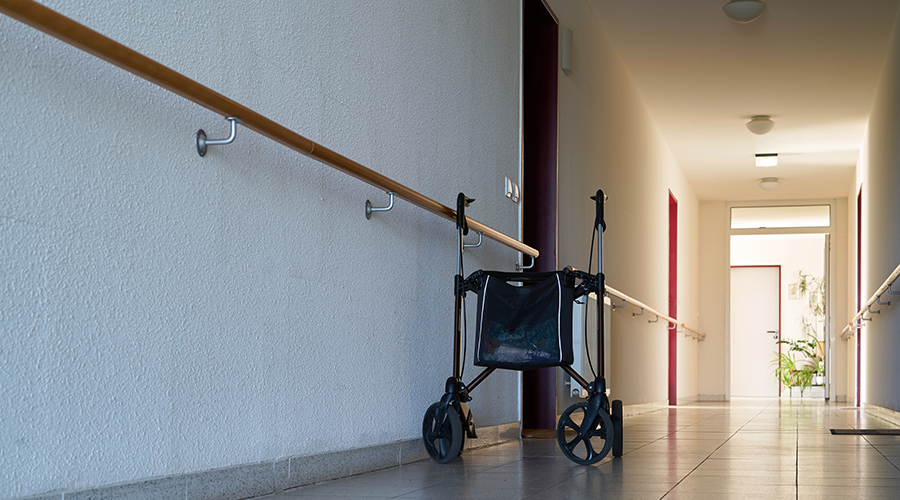Every year summer is welcomed with open arms, but the start of the warm weather comes a series of extreme weather events that facilities managers need to be prepared for. Natural disasters, such as earthquakes, hurricanes and tornados can have devastating consequences on buildings that are not properly secure. It is predicted that these extreme weather events will only increase over the years, so it is crucial that senior care facilities have the appropriate infrastructure in place so that patient care isn’t compromised.
Senior care facilities are required to operate every single day. While architecture in America is relatively new, most facilities need to be updated to meet current safety standards. It is essential that facilities managers work with design teams to schedule and plan for maintenance and renovations around these mission-critical activities.
“We always recommend various strategies, systems and technologies to help enhance the resiliency of a community,” says Grant Warner, senior designer and principal at HKS. “Sometimes those strategies are implemented, and sometimes they are just too costly or not practical at the time. We try to encourage resiliency by building in some infrastructure and to add other approaches and strategies that can be added later over time.”
Los Angeles has made recent headlines because of an earthquake that struck during the middle of Hurricane Hilary. Despite the unlikely odds, most buildings were deemed to be in secure standing. It is important that when designing spaces like senior care facilities, there is at least one room that can be reinforced. For example, these rooms can act as community spaces, but in the event of a storm, they can provide shelter in an emergency. This offers peace of mind to not only residents, but also their family members and care partners.
“Early planning with shelters is subcritical,” says Brent Bartell, principal, Hart Gaugler + Associates. “If you have different households within your building, you may want to look at two to four smaller, hardened shelves or shelters so that you can easily get people in because the warning window with a tornado is so small and people aren’t always ambulatory. They need assistance, so finding locations within your building to put those spaces where you’re going to have the best opportunity to get everyone in and out in a short time period is important.”
Another design consideration is redundancy, and not just in power. There have been lots of talk surrounding redundant power systems, microgrids, Power over Ethernet, dual generators and more, but there is also a need for redundancy in areas like the programming of spaces and how we move people through those communities, especially on a short notice.
“Now people are finally starting to use turbine generators that can use up to five sources of fuel,” Warner says. “We did one senior living community that implemented a micro grid in partnership with a grocery store next door. Local authorities are beginning to recognize at grocery stores are critical infrastructure, not just as distribution points for food, but also water and medicine and communication points to get news out to the community. Sharing that load with the grocery store, senior care facilities are able to get onto a microgrid and share those types of costs and burdens with other types of critical infrastructure.”
Evacuations
Life safety codes require exits to be at the end of buildings, which prevents people from getting trapped. However, in the event of a natural disaster, the evacuation process sometimes needs to be centralized to be better controlled for everyone’s safety. For example, one senior care facility added a third exit on purpose to help facilitate these types of evacuations in the event of extreme weather. If a natural disaster occurred, they could consolidate into the center and move to the multipurpose space, which was in the middle of the building, and not at the ends of wings.
“The act of moving people can be dangerous,” says Warner. “If we can make the building more resilient to protect seniors in place so they don’t have to evacuate, it just ends up being safer, not only during an event, but during all the practice sessions as well throughout the year.”
Warner also suggests that facilities put at least one elevator – preferably the largest service elevator – on standby power, even if it’s not required by code minimum.
“It's a cost premium and it and it's tough because elevators are power hogs, but it's worth it because then that can be designated as part of your accessible means of egress,” Warner says.
Mackenna Moralez is the associate editor for the facilities market.

 Building Sustainable Healthcare for an Aging Population
Building Sustainable Healthcare for an Aging Population Froedtert ThedaCare Announces Opening of ThedaCare Medical Center-Oshkosh
Froedtert ThedaCare Announces Opening of ThedaCare Medical Center-Oshkosh Touchmark Acquires The Hacienda at Georgetown Senior Living Facility
Touchmark Acquires The Hacienda at Georgetown Senior Living Facility Contaminants Under Foot: A Closer Look at Patient Room Floors
Contaminants Under Foot: A Closer Look at Patient Room Floors Power Outages Largely Driven by Extreme Weather Events
Power Outages Largely Driven by Extreme Weather Events